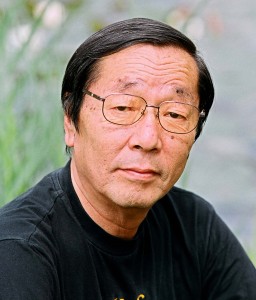Posts
RED SKY INTERACTIVE CREATIVE GUIDELINES
by Joel Hladecek
Redefine the “Standard” (or Excuse me, your “multimedia’s” showing! )
Make the concept, interface, art and animation support and drive the interactive experience- Don’t rely on the development programs to do it. Any fool can set a Director transition. Immerse the viewer in your world.
Also, don’t buy into industry interface conventions- most of them were developed by some data engineer named “Earl” with a pocket protector and bad hemorrhoids. Red Sky pushes harder than our competitors to raise the quality beyond what the rest of the industry settles for. In other words, as an artist working for Red Sky, don’t ever say “We did it that way at (my old company), it’s a standard”, or you will be tarred, feathered, cast out and publicly humiliated. SET the standard.
Example: Don’t settle for simple “up and down” button graphics just because it’s commonplace in most multimedia and/or easy to do. Consider creating smoother or more expressive buttons with more frames of animation to further support the metaphor. If memory is an issue- cut something else damn it.
(more…)
Graphic Designers’ Guide to Handling Client Changes
Handling a client who frequently requests unnecessary design changes can be challenging, but there are strategies you can use to address the situation professionally:
1. Clarify the Objectives Early On
– Start with a detailed discussion to understand the client’s goals, preferences, and expectations. Make sure they are clear on what the design will achieve.
– Establish key milestones and deliverables, and outline any constraints or limitations upfront.
2. Set Clear Boundaries and Limit Revisions
– Define a specific number of revisions in your contract. This will encourage the client to be more intentional with their feedback.
– If they exceed the agreed-upon number of revisions, politely inform them that additional changes may require extra fees or an extension to the timeline.
3. Educate the Client
– Sometimes, clients request changes because they don’t fully understand the design principles or how their requests affect the overall project.
– Take time to explain why certain elements work better and how frequent changes can dilute the effectiveness of the design.
(more…)How to become a great creative director?
Being a great creative director requires a mix of leadership, vision, and adaptability. Here are some key qualities and strategies to help you excel in this role:
1. Develop a Clear Vision
– Establish a strong creative vision that aligns with the brand’s goals and values. This will provide direction for your team and guide decision-making.
– Communicate your vision clearly to your team, clients, and stakeholders. Make sure everyone understands the goals and objectives.
2. Cultivate Your Creativity and Stay Inspired
– Stay up-to-date with design trends, art, technology, and cultural movements. Regularly consume content outside of your field to broaden your perspective.
– Encourage a culture of experimentation and exploration. Great ideas often come from unexpected places, so be open to unconventional sources of inspiration.
3. Empower and Trust Your Team
– Hire skilled, diverse team members and give them the freedom to bring their ideas to the table. Trust their expertise and let them take ownership of their work.
– Provide constructive feedback that encourages growth and improvement. Aim to be a mentor, not just a manager.
(more…)Simon Sinek on Long-Term Success and Leadership
Honda’s New Motocompacto E-Scooter Looks Like a Rideable Suitcase
BBC TWO DOCUMENTARY | PICASSO LAST STAND | 2018
80 Blocks From Tiffany’s Full Video
Masaru Emoto
Commentators have criticized Emoto for insufficient experimental controls and for not sharing enough details of his experiments with the scientific community.[9][17] He has also been criticized for designing his experiments in ways that permit manipulation or human error.[9][18] Biochemist and Director of Microscopy at University College Cork William Reville wrote, “It is very unlikely that there is any reality behind Emoto’s claims.”[9] Reville noted the lack of scientific publication and pointed out that anyone who could demonstrate such phenomena would become immediately famous and probably wealthy.[9]
Writing about Emoto’s ideas in the Skeptical Inquirer, physician Harriet A. Hall concluded that it was “hard to see how anyone could mistake it for science”.[5] In 2003, James Randi published an invitation on his website, offering Emoto to take the One Million Dollar Paranormal Challenge, in which Emoto could have received US$1,000,000 if he had been able to reproduce the experiment under test conditions agreed to by both parties. Randi did not receive a response.[19]
Quantum Theory
Quantum mechanics (QM — also known as quantum physics, or quantum theory) is a branch of physics which deals with physical phenomena at nanoscopic scales where the action is on the order of the Planck constant. It departs from classical mechanics primarily at the quantum realm of atomic and subatomic length scales. Quantum mechanics provides a mathematical description of much of the dual particle-like and wave-like behavior and interactions of energy and matter. Quantum mechanics provides a substantially useful framework for many features of the modern periodic table of elements including the behavior of atoms during chemical bonding and has played a significant role in the development of many modern technologies.
Technical advancements are not creative CONCEPTS

Ongoing advances in technology always open new possibilities for creatives and developers. It’s a way of life in digital media.
But do those exciting new advances make us better or worse at what we do? How do they challenge our inventiveness and our range of skills?
I hate to report, but the most exciting technical advancements in our medium today are a trap of a sort that critically limits how creative most of us are. And many are blind to it.
In fact you could be doing significantly better work than others in your field if you just change your mindset. And I want to help you do that.
The only way I know to explain this is to tell you how I came to this place.


